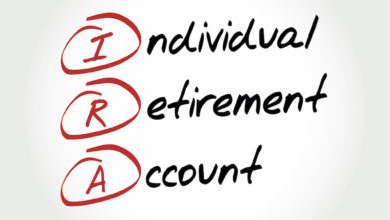Dadpreneurs: Choosing the Best Small Business IRA Plans


“Enjoy the little things in life, for one day you may look back and realize they were the big things.” – Robert Brault

Are you a dadpreneur who is a small business owner? If so, you should know that carefully investigating your retirement plan possibilities is essential. Delving into the array of IRAs tailored for small businesses can be complex, yet selecting an optimal strategy is vital for ensuring financial stability in your later years. To aid you in this important decision that is part of your retirement score, we will evaluate SEP, SIMPLE, traditional and small business IRA so that you can identify the best-fitting retirement approach for your entrepreneurial venture.
Key Takeaways
- Small business owners have diverse IRA options for retirement planning, including SEP, SIMPLE, traditional, and Roth IRAs, each with unique benefits, contribution limits, and tax implications. They can calculate their retirement score to learn how they are regarding a high-income retirement.
- Employer contributions, such as matching in SIMPLE IRAs or elective deferrals in 401(k) plans, can significantly enhance employee retention and satisfaction while providing tax benefits for the business.
- The SECURE 2.0 Act introduced new enhancements to retirement plans, such as potential Roth treatments for SEP and SIMPLE IRAs, and tax benefits, such as deductions on contributions and credits for new plans, which are available to reduce costs for small businesses.
Exploring Small Business IRA Options for Dadpreneurs

The retirement planning terrain for small business owners, especially dadpreneurs, encompasses a variety of options to ensure financial stability in later life. Options range from conventional and Roth IRAs to Simplified Employee Pension (SEP) plans, as well as the Savings Incentive Match Plan for Employees (SIMPLE) IRAs—each with its distinct advantages and aspects to consider. It’s crucial that you, as a business owner, take the initiative in your retirement planning and establish an appropriate plan tailored for small businesses. This proactive approach is especially important for self-employed individuals who might not have access to employer-sponsored 401(k)s. Thus making dedicated self-employed retirement plans critical.
Delving into the assortment of available retirement plans can be daunting at first glance. Comprehending the specifics behind each IRA option is key. No matter if you’re running solo or managing a handful of employees within a modest-sized company—or are even part of something bigger—the decision on which type of retirement plan fits best could profoundly affect your monetary comfort during those years post-career work-life cessation. As such, it becomes imperative to break down these varying types of IRA alternatives, simplifying the quest towards effective solid groundwork upon which to build one eventual exit strategy professional endeavors in a secure fashion.
Understanding SEP IRAs
 As a dadpreneur, you may find that a SEP IRA is an appealing avenue for building your retirement nest egg, regardless of the size or type of your enterprise. Notably, in 2024, the SEP IRA enables larger contributions than traditional IRAs — up to 25% of earnings or $69,000 (whichever is lower). These elevated contribution limits are key advantages that enable you to accelerate the growth of your retirement fund [1].
As a dadpreneur, you may find that a SEP IRA is an appealing avenue for building your retirement nest egg, regardless of the size or type of your enterprise. Notably, in 2024, the SEP IRA enables larger contributions than traditional IRAs — up to 25% of earnings or $69,000 (whichever is lower). These elevated contribution limits are key advantages that enable you to accelerate the growth of your retirement fund [1].
Yet it’s important to recognize certain responsibilities attached to maintaining a SEP IRA. A significant requirement entails providing proportional contributions across all qualified employees within your organization. This means as a business owner. You must deposit an equivalent percentage of each eligible staff member’s salary into their individual SEP IRAs—your own included—which could be less advantageous if you employ many people.
On the upside, though, contributing to this plan has tax benefits since contributions can be deducted when filing taxes, enhancing its fiscal efficiency. Investing through a SEP IRA offers flexibility. It permits placing funds into various investment vehicles, such as Exchange-Traded Funds and mutual funds, presenting diverse options for growing savings designated for retirement.
The Simplicity of SIMPLE IRAs
A SIMPLE IRA may be the answer for dadpreneurs seeking an efficient way to save for retirement. This option is well-suited for small businesses with no more than 100 employees and provides several advantages.
- Employees can make contributions through salary deferral
- For the year 2024, an employee’s contribution limit stands at $16,000 [2]
- Those aged 50 and over have the opportunity to make a catch-up contribution of up to $3,500
SIMPLE IRAs are less complex compared to qualified plans since they do not necessitate vesting schedules or top-heavy testing nor require reporting taxes on plan levels. These features lessen administrative duties for business owners. However, as employers, you must contribute by either matching your employees’ contributions up to 3% of their pay or making a non-elective contribution of 2% on behalf of each eligible worker, regardless of whether they choose to contribute themselves. Despite these stipulations, many owners find that SIMPLE IRAs provide a balance between offering substantial benefits and maintaining simplicity in managing their company’s retirement offerings.
Traditional and Roth IRAs for Business Owners
When dadpreneurs and self-employed begin their retirement savings, the decision to opt for a traditional IRA or a Roth IRA is crucial. Each presents distinct advantages. Contributions made to a traditional IRA can reduce taxable income in the year they’re made, offering immediate tax benefits.
Conversely, while Roth IRAs do not afford an upfront tax deduction, they provide the perk of being able to make withdrawals during retirement that are free from taxes. This could be immensely beneficial if one predicts being subject to higher tax rates upon retiring than at present. Deciding between using a traditional IRA or opting for a Roth IRA hinges on both current earnings as well as future income projections and is highly specific to each individual’s financial scenario.
Maximizing Retirement Savings with Employer Contributions

 Contributing to your own 401(k) plan, as well as that of your employees, is a powerful method for bolstering retirement savings. Such contributions can be made through elective deferrals and non-elective contributions alike. For those contemplating the establishment of a SEP IRA, its appeal lies in its contribution deadline flexibility. It allows you to contribute all the way up until the tax-filing due date, thus affording considerable latitude in managing retirement funds.
Contributing to your own 401(k) plan, as well as that of your employees, is a powerful method for bolstering retirement savings. Such contributions can be made through elective deferrals and non-elective contributions alike. For those contemplating the establishment of a SEP IRA, its appeal lies in its contribution deadline flexibility. It allows you to contribute all the way up until the tax-filing due date, thus affording considerable latitude in managing retirement funds.
Setting up a payroll deduction IRA could benefit small businesses looking at alternative options. It provides tax benefits since employee contributions may lower their taxable income. As an owner of a small business, providing this type of IRA not only assists you with employee retention but also supports them in securing their financial future post-retirement.
Aligning Contributions with Earnings
For small business owners, a crucial component of retirement planning involves matching their savings to their income levels. The maximum amounts that can be contributed to retirement plans such as IRAs hinge on the earned income you make from your enterprise, making it essential for your saving strategy to reflect how well your business is doing. This relationship serves as an incentive, encouraging dadpreneurs to achieve higher levels of success.
On the other hand, precision is necessary when self-employed individuals work out contributions for retirement purposes. It’s important for them to consider several factors: net profits after expenses from self-employment activities. Any portion of self-employment taxes that can be deducted. And also the actual contribution toward their retirement plan itself. Despite being complex by nature, this methodical calculation ensures accurate assessment regarding permissible contributions towards one’s future financial security.
The Impact of Matching Contributions
Matching contributions can significantly enhance both your retirement savings and the success of your business. As a dadpreneur utilizing SIMPLE IRAs, you’re mandated to either match employee contributions up to 3% or opt for a nonelective contribution that gives 2% of an employee’s compensation [3]. The attractive part is that employees gain instant full ownership as these funds are immediately vested.
By providing matching contributions, you augment your retirement reserves and promote greater job satisfaction and loyalty among your staff due to their appreciation for your commitment to their future security. Offering this benefit allows you as the business owner to enjoy tax benefits associated with SIMPLE IRAs by diminishing taxable income, which may, in turn, reduce overall tax obligations.
Tax Benefits and Credits for Small Businesses
 Small business owners can reap considerable tax advantages and credits by providing retirement plans, made more attractive with SURE 2.0. Act of 2022, which has proposed improvements to SEP and SIMPLE IRA plans, such as Roth options for contributions and increased contribution limits. These potential enhancements complement a set of established benefits that have long made these plans favorable to dadpreneurs due to their low setup and maintenance costs. It’s essential for business owners to carefully consider the account management fees charged by their IRA provider when selecting a plan suitable for their small businesses.
Small business owners can reap considerable tax advantages and credits by providing retirement plans, made more attractive with SURE 2.0. Act of 2022, which has proposed improvements to SEP and SIMPLE IRA plans, such as Roth options for contributions and increased contribution limits. These potential enhancements complement a set of established benefits that have long made these plans favorable to dadpreneurs due to their low setup and maintenance costs. It’s essential for business owners to carefully consider the account management fees charged by their IRA provider when selecting a plan suitable for their small businesses.
Navigating Deductions on Contributions
One of the prime advantages of small business owners participating in retirement plans such as defined benefit plans is that contributions are typically tax deductible. This means you can decrease your taxable income and consequently decrease the total amount of taxes owed.
Incorporating defined benefit plans into your strategy for retirement savings can be particularly appealing due to these significant tax benefits. The deductions available make it an attractive choice for bolstering your future financial stability while enjoying immediate fiscal advantages.
Understanding Tax Credits for New Plans
Small businesses establishing new retirement plans are not only entitled to tax deductions but may also qualify for valuable tax credits. If you’re a business with no more than 100 employees who received at least $5,000 in compensation the previous year and have one participant who is not a highly compensated individual, you might be eligible for an annual tax credit of up to $5,000 over three years. This credit can defray costs incurred from initiating SEP, SIMPLE IRA, or qualified retirement plans.
Your small business could receive an extra tax credit worth $500 by incorporating auto-enrollment into your retirement plan. This bonus credit is attainable for each of the first three years after integrating this feature into your plan design. To take advantage of these two types of credits when they apply to you, you must file Form 8881. Do note that offering similar plans within the last three-year period will render you ineligible.
By providing these incentives through tax credits specifically aimed at reducing setup expenses related to new retirement plans such as SIMPLE IRAs, among others, smaller companies find it more economically viable to extend these vital benefits to their workforce.
Investment Choices and Account Management

 Effective management of retirement savings for small business owners involves the astute handling of investment choices, as well as keeping a close eye on account fees and plan expenses. SEP IRAs offer an advantage in this area by adhering to the same rules regarding investments, distributions, and rollovers that apply to traditional IRAs. They also provide dadpreneurs with varied investment opportunities like stocks, bonds, and mutual funds. The ability to diversify through these options can potentially amplify your retirement reserves.
Effective management of retirement savings for small business owners involves the astute handling of investment choices, as well as keeping a close eye on account fees and plan expenses. SEP IRAs offer an advantage in this area by adhering to the same rules regarding investments, distributions, and rollovers that apply to traditional IRAs. They also provide dadpreneurs with varied investment opportunities like stocks, bonds, and mutual funds. The ability to diversify through these options can potentially amplify your retirement reserves.
Both SEP and SIMPLE IRAs stand out for their cost efficiency and simplicity in establishment, which is particularly advantageous for small businesses looking to streamline their retirement fund administration. It’s critical to recognize that when employers implement payroll deduction IRA schemes on behalf of their employees, they are not held responsible for directing or choosing investments, thus sparing them from complex fiduciary responsibilities.
Exchange Traded Funds and Mutual Funds
It is commonly advised for small business Individual Retirement Accounts (IRAs) to include Exchange Traded Funds (ETFs) and mutual funds, as their diversification provides a way to spread out investment risk. This strategy can lead to more consistent returns over an extended period. For those looking into core U.S. equity exposure, tax-efficient options exist like the iShares Core S&P 500 ETF (IVV), Vanguard Total Stock Market ETF (VTI), and Vanguard Tax-Managed Capital Appreciation Fund (VTCLX). These particular investments are structured with low turnover rates and special strategies for tax management that aim at minimizing taxable capital gains.
Incorporating ETFs and mutual funds into IRAs of small businesses calls for careful evaluation of growth potential against the inherent risks tied to these investment types. Crafting a portfolio that strikes a balance between achieving your fiscal objectives and sensibly navigating through risks is paramount in securing financial stability through smart investing practices.
Evaluating Account Fees and Plan Expenses
When exploring investment choices, it’s critical to pay attention to both account fees and operational costs. These charges can have a substantial effect on your IRA investments’ growth trajectory over time. Factors like the annual tax cost ratio of mutual funds clearly demonstrate how taxes can diminish your retirement portfolio’s overall earnings. This is an essential aspect when assessing plan expenses.
By meticulously analyzing the fees and expenses associated with your retirement plan, you are empowered to make informed decisions aimed at enhancing the growth prospects of your investments. Keep in mind that each dollar conserved by avoiding excessive fees and expenses represents another dollar available for investing in securing your financial future.
Tailoring Your Retirement Plan to Your Small Business

Creating a retirement plan that suits your individual needs is essential, as there isn’t a universal solution for retirement planning. When shaping a flexible retirement plan, it’s important to consider specific aspects of your business, such as the current market environment and how you intend to transition out of your business.
Particularly, crafting an exit strategy for the small business that allows it to function independently from its owner plays a crucial role in tailoring a retirement plan. This ensures that the unique requirements of both the owner and their enterprise are met effectively.
For Sole Proprietors and Self-Employed Individuals
 As a self-employed person or sole proprietor, you can access various options for retirement savings. Solo 401(k) plans are notable for their high contribution limits and permit contributions of up to 100% of earned compensation, with the bonus of additional catch-up contributions if you’re over 50. If you operate alone or with just a few employees, SEP IRAs can be an excellent choice due to their higher contribution limits when compared to traditional IRAs.
As a self-employed person or sole proprietor, you can access various options for retirement savings. Solo 401(k) plans are notable for their high contribution limits and permit contributions of up to 100% of earned compensation, with the bonus of additional catch-up contributions if you’re over 50. If you operate alone or with just a few employees, SEP IRAs can be an excellent choice due to their higher contribution limits when compared to traditional IRAs.
For self-employed individuals, both Traditional and Roth IRAs present viable savings avenues. A Roth IRA might prove especially advantageous for individuals currently in lower income brackets but who expect higher taxes during retirement. Alternatively, defined benefit plans suit high-income earners without any employees well because they allow these individuals to save substantial amounts consistently towards retirement.
When calculating maximum allowable contributions toward retirement as a self-employed individual, it is important to consider the yearly caps on eligible employee compensation, which have been adjusted to reflect your burden from self-employment tax alongside your own investments into personal savings schemes.
Creating a Retirement-Friendly Workplace
Establishing a retirement plan within your small business can prove highly advantageous. Introducing such plans to employees plays a crucial role in attracting and retaining exceptional talent, elevates staff morale, and distinguishes your company as an employer of choice amid the competitive job market landscape. It’s worth noting that incorporating these retirement options greatly contributes to the long-term financial stability of your workforce, which is directly linked with increased satisfaction at work.
For some small businesses, implementing complex retirement programs like 401(k) plans might present formidable obstacles due to limited resources, time constraints, or insufficient expertise. This is where considering more manageable alternatives such as IRAs and Solo 401(k)s becomes valuable. When you take steps towards offering a suitable retirement planning option tailored to your small enterprise’s needs, not only do you facilitate secure futures for employee retirements, but you simultaneously enhance their contentment in their current roles.
Achieve Financial Wellness with IFW: Your Partner in Financial Education and Planning
 Embarking on the path to financial health doesn’t mean you have to go it alone, even if you’re a dadpreneur. The Institute of Financial Wellness (IFW) delivers a robust suite of educational materials, resources, and services dedicated to advancing one’s financial understanding and well-being. With dynamic content and professional expertise readily available, at the IFW, we stand by our commitment to assisting individuals in reaching their utmost financial potential across all stages of life. Whether your focus is retirement preparation or untangling the web of financial planning, turn to the IFW for clear guidance that can encourage you with confidence as you make critical monetary choices.
Embarking on the path to financial health doesn’t mean you have to go it alone, even if you’re a dadpreneur. The Institute of Financial Wellness (IFW) delivers a robust suite of educational materials, resources, and services dedicated to advancing one’s financial understanding and well-being. With dynamic content and professional expertise readily available, at the IFW, we stand by our commitment to assisting individuals in reaching their utmost financial potential across all stages of life. Whether your focus is retirement preparation or untangling the web of financial planning, turn to the IFW for clear guidance that can encourage you with confidence as you make critical monetary choices.
Amongst its offerings are:
- The IFW Retirement Roadmap is designed to guide individuals toward fulfilling their most ambitious retirement aspirations.
- A program aimed at significantly diminishing college-related expenses out-of-pocket.
- Methods tailored toward maximizing your 401(k)’s growth potential.
By offering access to finance experts who collectively hold over 35 highly regarded certifications and accreditations within the field, the IFW commits itself to providing top-tier advice tailored for clientele eager to meet diverse fiscal ambitions.
Full Summary
As a small business owner and dadpreneur navigating the complexities of retirement planning, it’s essential to meticulously evaluate and select from IRA options such as traditional IRA, Roth IRA, SEP IRA, or SIMPLE IRA. These choices will considerably influence your financial well-being during retirement. Key factors, including employer contributions to your plan, advantageous tax benefits associated with each option, judicious investment decisions, and adept management of the account, are integral for optimizing your retirement savings. Although embarking on this path may seem overwhelming initially, be reassured that by taking proactive measures now, you’re laying down a solid foundation towards achieving economic stability in later life. Seize control over securing your post-working years by starting immediately, paving the way toward ample financial resources when you retire.
Frequently Asked Questions
What are the different IRA options available for small business owners?
Small business owners can select from a variety of Individual Retirement Account (IRA) options suitable for their specific requirements and the nature of their business. These options encompass traditional IRAs, Roth IRAs, SEP IRAs, and SIMPLE IRAs.
It is important for business owners to pick an IRA that aligns with their unique circumstances.
How can employer contributions enhance retirement savings?
Employer contributions have the potential to considerably augment retirement savings, enriching 401(k) plans for both employees and employers.
This may encompass both elective deferrals as well as contributions that are not based on an employee’s election.
What are some of the tax benefits and credits for small businesses?
Small businesses can gain financial advantages by taking advantage of tax deductions on their contributions and earning tax credits to initiate new retirement plans.
To optimize the tax benefits available, these options should be carefully considered.
How can investment choices impact retirement savings?
Selecting appropriate investment options, like ETFs and mutual funds, along with keeping account fees in check, is crucial for the expansion of your retirement savings.
When laying out plans for future financial security, it’s essential to give due attention to these elements.
What are some ways to make a workplace retirement-friendly?
In order to cultivate an environment conducive to retirement within the workplace, it is important to provide offerings such as retirement plans and foster a supportive atmosphere for engaging in retirement planning. Supplying educational materials on financial matters can greatly enhance this retirement-friendly setting.
Erik C. Sussman, CLU®, ChFC®, CFP®, and CEO of The Institute of Financial Wellness founded the company to provide financial education, resources, and services that help people live their best lives.
For Financial Professionals:
The Institute of Financial Wellness provides proven sales and marketing systems, state-of-the-art technology, training, and support to financial professionals nationwide. The IFW helps financial professionals grow their practices to the next level! IFW Certified Financial Professionals are an elite group of professionals that, together with the IFW, help people succeed financially and live their best lives.
For Consumers:
The Institute of Financial Wellness is the most comprehensive multi-media network for financial education, resources, and services. In fulfilling our mission to help people “Get There” and live their best life, we deliver the following five unique value propositions:
Our philosophy is that when it comes to financial decisions, Never say Never. Never say Always. It Depends!






